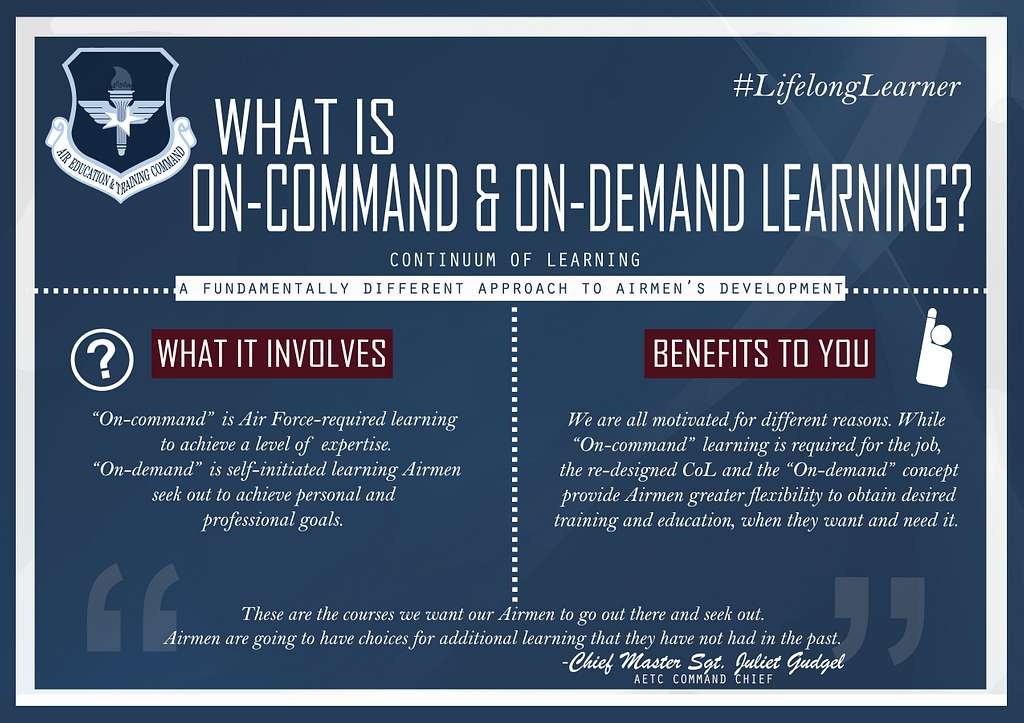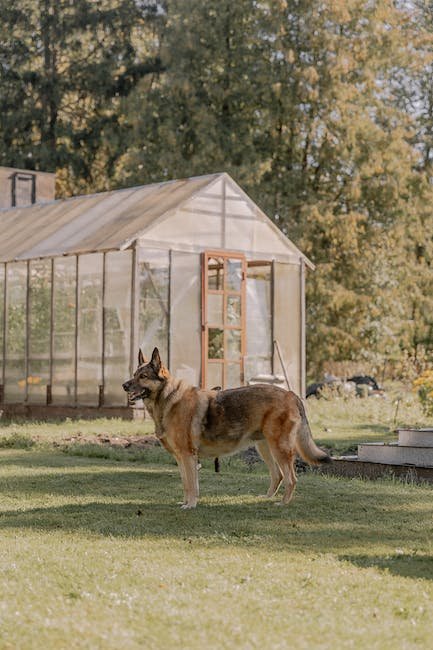Dogs possess an undeniable zest for life, accompanied by an unwavering loyalty towards their human companions. As responsible pet owners, it becomes our utmost duty to ensure their well-being, while nurturing their obedience through effective training methods. With a wide array of equipment available, the debate between harnesses and collars has sparked curiosity among dog enthusiasts. In the pursuit of finding what truly suits our four-legged companions, it is crucial to delve into the intricate details of both options, analyzing their efficacy, comfort, and safety. So, let’s embark on this enlightening journey and discern the age-old question: harness or collar - what’s best for your dog’s training?
Table of Contents
- – Understanding the Key Differences: Harness and Collar
- – Advantages and Disadvantages: Weighing the Training Benefits
- – Tailoring Your Choice to Your Dog’s Needs and Health
- - Best Practices: Effective Training Techniques for Harnesses
- – Making an Informed Decision: Selecting the Right Option for Your Canine Companion
- Q&A
- The Way Forward

– Understanding the Key Differences: Harness and Collar
When it comes to walking your furry companion, choosing the right gear is essential for their comfort and safety. Two commonly used options are harnesses and collars, both serving the purpose of keeping your pet under control during walks. However, it’s important to understand the key differences between them before making a decision.
Harness:
- A harness wraps around your pet’s chest and back, distributing pressure over a larger area.
- It provides better control and reduces the risk of neck and throat injuries, particularly for dogs with respiratory issues or delicate necks.
- With a secure fit, a harness discourages pulling and allows for better steering during walks.
- It’s ideal for training, especially for puppies, as it minimizes strain on their necks while they learn proper leash manners.
- If your dog tends to escape easily, a harness with a front-clip attachment can help redirect their forward motion.
Collar:
- A collar fits around your pet’s neck and is the go-to option for attaching identification tags.
- It offers a traditional look and is generally lighter and less bulkier than a harness.
- For well-behaved dogs that walk calmly on a leash, a collar provides a simple and straightforward option.
- It’s not recommended for dogs that pull excessively or have respiratory issues, as this can strain their neck.
- Collars with quick-release buckles are useful for emergency situations or for dogs that tend to get caught on objects.
Ultimately, the choice between a harness and a collar depends on your pet’s specific needs and behavior. Consider their size, breed, and any existing health conditions before making a decision. It’s always wise to consult with a veterinarian or a professional dog trainer to ensure you make the best choice for your furry friend.

– Advantages and Disadvantages: Weighing the Training Benefits
Advantages and Disadvantages: Weighing the Training Benefits
When it comes to training, there are undoubtedly numerous advantages that can greatly benefit individuals and organizations. However, it is important to also consider the potential disadvantages that may arise. By carefully weighing the training benefits, one can make informed decisions and ensure that the advantages outweigh any drawbacks.
Advantages:
- Enhanced Knowledge and Skills: Training provides an opportunity for individuals to acquire new knowledge and develop their skills, allowing them to become more competent in their roles. This can lead to increased productivity and improved job performance.
- Boosted Employee Morale and Engagement: Offering training opportunities demonstrates that an organization values its employees’ growth and development. This, in turn, can contribute to higher levels of job satisfaction, morale, and engagement within the workforce.
- Stay Ahead in a Competitive Market: With industries constantly evolving, it is crucial to stay up to date with the latest trends and technologies. Training keeps employees equipped with the necessary tools and knowledge to tackle challenges and remain competitive in the market.
Disadvantages:
- Cost and Time Constraints: Training programs can be time-consuming and often require financial investments. Organizations must carefully balance the cost and time spent on training with the expected benefits and the availability of resources.
- Potential Disruption to Workflow: Implementing training can temporarily disrupt regular work routines and productivity. It’s essential to plan and schedule training sessions strategically to minimize any negative impact on day-to-day operations.
- Retention of Newly Acquired Skills: While training can equip individuals with new skills, the retention of these skills over time may vary. Reinforcement and ongoing practice may be necessary to ensure long-term retention and application of the newly acquired knowledge.
By assessing both the advantages and disadvantages of training, organizations can make informed decisions that enable them to reap the benefits while mitigating any potential drawbacks. It is crucial to consider the specific needs, resources, and goals of the organization to ensure that training initiatives align with overall strategic objectives.

– Tailoring Your Choice to Your Dog’s Needs and Health
Tailoring Your Choice to Your Dog’s Needs and Health
When it comes to choosing the right dog food for your beloved furry friend, it is important to consider their individual needs and health requirements. Every dog is unique, and their diet should reflect that. Here are some key factors to consider when tailoring your choice to your dog’s needs and health:
Dietary Restrictions:
If your dog has any dietary restrictions or allergies, it is crucial to choose a dog food that meets those specific needs. Some dogs may have sensitivities to certain ingredients like grains, dairy, or certain protein sources. Look for dog food brands that offer specialized options for dogs with allergies or sensitivities.
Life Stage:
Another essential aspect to consider is your dog’s life stage. Puppies, adult dogs, and senior dogs have different nutritional requirements. Ensure that the dog food you select is specifically formulated to meet the needs of your dog’s current life stage.
Health Concerns:
If your dog has any health concerns, such as joint issues, skin problems, or weight management, it is beneficial to choose a dog food that addresses those specific concerns. Look for formulas that contain ingredients known to support joint health, improve coat condition or promote weight loss.
By considering your dog’s dietary restrictions, life stage, and any health concerns, you can make an informed decision about the best dog food for their needs. Remember to consult with your veterinarian, who can provide guidance and recommend specific brands or formulations suited to your dog’s unique requirements.
– Best Practices: Effective Training Techniques for Harnesses
Best Practices: Effective Training Techniques for Harnesses
When it comes to using harnesses for training, there are several techniques that have proven to be highly effective. Whether you are training a dog, a bird, or any other pet, using these best practices will ensure successful and safe training sessions.
1. Positive Reinforcement:
- Harness training should always be associated with positive experiences and rewards.
- Use treats, praise, and play to reinforce the desired behaviors.
- Avoid punishment or harsh corrections, as they can create fear and anxiety.
2. Gradual Introductions:
- Start by introducing the harness to your pet in a calm environment.
- Allow them to sniff and explore the harness before attempting to put it on.
- Gradually increase the duration of wearing the harness over several sessions.
3. Patience and Consistency:
- Training takes time, so be patient and understanding with your pet.
- Consistency is key; establish a regular training schedule and stick to it.
- Keep the training sessions short and end on a positive note.
Remember, each pet is unique, so adapt these techniques to suit your pet’s individual needs. With time, patience, and positive reinforcement, your pet will become comfortable and confident in their harness, making walks and outings a joy for both of you. So, embrace these best practices and enjoy the training journey with your furry friend!
– Making an Informed Decision: Selecting the Right Option for Your Canine Companion
Making an Informed Decision: Selecting the Right Option for Your Canine Companion
Deciding on the right option for your precious furry friend can feel like a daunting task. With so many choices out there, it’s essential to make an informed decision. Here are some key factors to consider when selecting the perfect fit for your canine companion:
- Size and Activity Level: Matching the size and activity level of your dog with the appropriate option is crucial. High-energy breeds might thrive with larger spaces and outdoor access, while small and less active dogs might prefer a cozy indoor environment.
- Health and Special Needs: Your dog’s health and any special needs they may have should play a significant role in your decision. Consider factors such as allergies, mobility issues, or medical conditions that may require specific accommodations, like allergy-friendly materials or easy access to outdoor areas.
- Temperament and Socialization: Understanding your dog’s temperament and socialization needs will help guide your decision-making process. Some dogs are social butterflies and will benefit from options that provide opportunities for interaction with other canines, while more introverted dogs might prefer a quieter and calmer environment.
Remember, every dog is unique, and what works for one may not work for another. Take the time to assess your furry companion’s individual needs, and you’ll undoubtedly be on the right path to selecting the perfect option that will ensure their happiness and well-being.
Q&A
Which is better for training: a harness or a collar?
Both have their benefits depending on the specific needs of your dog. A harness is ideal for dogs that tend to pull on the leash, providing better control and reducing the risk of neck injuries. On the other hand, a collar may be more suitable for well-trained dogs that don’t pull excessively.
Can a harness restrict my dog’s movement?
Not necessarily. While some harnesses can restrict movement if too tight or improperly fitted, there are various options available that allow for a range of motion while providing necessary control. Ensure that you choose a well-fitting harness that doesn’t impede your dog’s natural movements.
Is a collar uncomfortable for my dog?
When fitted correctly, a collar should not cause discomfort for your dog. It should be snug enough to prevent slipping off, but loose enough to allow your dog to breathe and move comfortably. Always monitor your dog when using a collar to ensure it remains fitted properly.
Can a harness help with leash pulling?
Absolutely! A harness is a fantastic tool for managing dogs that have a tendency to pull on the leash. By distributing the pressure across the chest or back, a harness can redirect your dog’s attention and discourage leash pulling more effectively than a collar.
What about using both a harness and a collar?
Using both a harness and a collar together can provide extra control and safety, especially in high-stress or busy environments. The harness can be used as the primary attachment point while the collar serves as a backup, providing peace of mind in case of accidental slips.
Should I switch between a harness and a collar for different activities?
It depends on the specific needs of your dog. For outdoor activities like hiking or jogging, a harness might be more suitable due to better control and stability. However, for regular walks in familiar environments, a well-fitted collar may be more convenient and comfortable for your dog.
Is one option more suitable for puppies?
Puppies require gentle training and supervision, making a harness an excellent choice. A harness can provide better control and prevent neck injuries during the early stages of leash training. As your puppy grows and becomes more well-behaved, transitioning to a collar might be suitable.
The Way Forward
As we conclude this riveting discourse on the age-old debate of harness versus collar, we hope to have shed some light on the potential paths you can explore during your dog’s training journey. Remember, dear readers, that the decision ultimately lies in your capable hands, for you know your furry companion better than anyone else. Whether you opt for the snug embrace of a harness or the classic simplicity of a collar, the key lies in understanding your dog’s needs, size, and individual temperament. Harnesses, with their exceptional control and distribution of pressure, have emerged as a reliable alternative for those seeking comfort and ease for their four-legged friends. On the other paw, collars boast a timeless charm, offering a no-frills approach to training that may suit some dogs just fine. The choice is yours, dear readers, to embark upon the marvelous adventure of canine training armed with the knowledge you have acquired today. May you find success and harmony in the bond you share with your beloved pup, as you navigate the vast world of harnesses and collars with confidence and finesse. Here’s to the joyous moments and wagging tails that lie ahead on your journey towards a well-trained and content pooch. Happy training!
As an affiliate, my content may feature links to products I personally use and recommend. By taking action, like subscribing or making a purchase, you’ll be supporting my work and fueling my taco cravings at the same time. Win-win, right?
Want to read more? Check out our Affiliate Disclosure page.